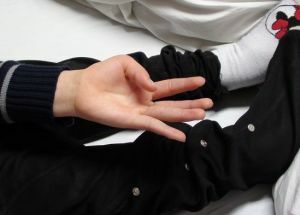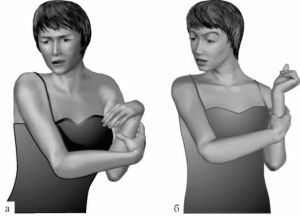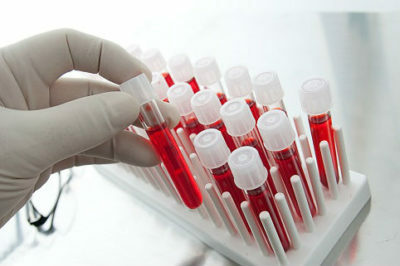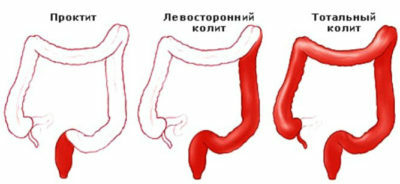 Any neurological disease has its prerequisites for development. Some of them are congenital, others are acquired.
Any neurological disease has its prerequisites for development. Some of them are congenital, others are acquired.
In order to prescribe adequate therapy and make the right prognosis for development, it is necessary to identify the true cause of the attack. The same is true for atherosis. The earlier the problem is diagnosed, the easier it is to take therapeutic measures.
Athetosis is the occurrence of pathological involuntary movements. In this situation, the lower and upper limbs are subjected to tonic convulsions of a slow nature.
Athetosis can affect not only the hands and feet, but also the face with the trunk. Often in the complex there is also a symptomatology of dystonia and chorea, which is expressed in regular muscle contractions of a disorderly and abrupt nature.
Contents
- Types of athetotic hyperkinesis
- Mechanism of formation and site of localization
- What is choreoathetosis?
- Difference between chorea and dystonia
- Relationship with other diseases
- Diffiagnosis is the most important step on the way to success
- Medical care
- Complications and prediction
Types of athetotic hyperkinesis
There are two types of athetosis in medicine:
- Single-sided .It is localized only on the left or right side of the trunk. Athetosis of this form is a symptom of defeat in the formations of the striopallidal system, because of which it can not fully distribute muscle tone. There is an opposite manifestation, that is, if the right formations are affected, then athetosis will affect the left side of the body. And vice versa. Most often it occurs in children who have had to suffer a stroke.
- Double-sided .In this case, the pathology affects both sides. In medicine, such a species is classified as one of the varieties of infantile cerebral palsy.
Athetical hyperkinesis is the union of all kinds of violent movements that are performed involuntarily. Unfortunately for  , modern medicine has not come to a consensus on the etiology of the disease.
, modern medicine has not come to a consensus on the etiology of the disease.
But most specialists slope to the view that it develops against a background of imbalance of neurotransmitters, which leads to an increase in catecholamines and a decrease in acetylcholine with glycerol in the body.
Hyperkinesis has its classification based on the level of lesions:
- is affected by the brain - manifested by tics, tremors, hemispasm of the face and myoclonia;
- amazed subcortical areas of - manifested by torsion dystonia, chorea, athetosis;
- when cortical and subcortical areas of are affected - generalized convulsions, myoclonus-epilepsy develop.
To combat the disease, you need to undergo a comprehensive diagnosis. It will help to identify the site and extent of the lesion, due to which it is possible to develop adequate therapy.
Mechanism of formation and site of localization
Often athetosis signals the presence of lesions in the basal ganglia. This situation does not arise on an equal footing. It is preceded by a number of the following diseases:
- mitochondrial encephalomyopathy;
- hepatolenticular degeneration;
- ataxia-telangiectasia;
- paroxysmal choratetosis;
- Huntington's disease;
- dentato-rubro-lyuis atrophy;
- Lesha-Naikhan syndrome;
- torsional dystonia.
All these diseases are genetic. But it also happens that athetosis develops if a child or an adult has transferred a disease of an autoimmune, toxic, metabolic nature or has a history or a brain tumor or trauma.
 Athetosis develops if, for some reason, crashes occur in the nuclei of the extrapyramidal system. Then the patient ceases to control his movements. It turns out that consciousness does not participate in such a process.
Athetosis develops if, for some reason, crashes occur in the nuclei of the extrapyramidal system. Then the patient ceases to control his movements. It turns out that consciousness does not participate in such a process.
The power of manifestation depends on the extent of the lesion and the location of the localization. Pathology leads to a weakening of the neurotransmitter effect of signaling through the body. If the connections between parts of the striatum are damaged, then atherosis will begin to manifest.
With such a disease, hands often suffer. The middle and nail phalanx get an unnatural position, in parallel with what the muscles of the hand can, then abruptly contract, then relax. Athetosis tends to spread, because of which the muscles of the body and face are affected.

This condition requires constant monitoring by specialists.
What is choreoathetosis?
 The disease received such a name in the consequence of combining the manifestations of two different ailments - chorea and athetosis. In the first variant, the movements are fast and gusty, and in the second - slow and convulsive. In a patient with such a problem, a brighter expression of that or ion type can be observed. There is choreoathetosis in the event that there is a lesion of the striped site.
The disease received such a name in the consequence of combining the manifestations of two different ailments - chorea and athetosis. In the first variant, the movements are fast and gusty, and in the second - slow and convulsive. In a patient with such a problem, a brighter expression of that or ion type can be observed. There is choreoathetosis in the event that there is a lesion of the striped site.
To develop horeatethosis, it needs a cause that will affect the striatum of the brain. To such reasons carry:
- hereditary disorders - trimethylglutaconil aciduria, hepatocerebral dystrophy, ataxia with oculomotor apraxia of the first degree, paroxysmal choreoathetosis, Huntington's chorea;

- diseases of a neurodegenerative nature;
- if a person had an infection that affected the striped body;
- is not the correct medication, which caused a toxic brain damage;
- frontal-lobe epilepsy;
- cerebral palsy;
- is a tumor in the brain that affects the striatum.
Depending on what triggered the appearance of choreoathetosis, the doctor will prescribe appropriate treatment. But to do this, the patient has to undergo a series of examinations.
The difference between chorea and dystonia
Athetosis, depending on the form, can combine several signs of other diseases. The most common are chorea and dystonia. But there are also differences here. Let's go over them in more detail:
- Chorei .With this ailment, frequent, brief, chaotic movements occur. They can "jump" from one part to another, while it is impossible to predict such a moment. Unlike dystonia, chorea manifests itself not for long. Therefore, from the outside, it may seem that a person is just a little more restless than usual.
- Dystonia .Such a syndrome arises from a muscle spasm that lasts a long time. This creates twisting or repeated movements. If the chorea is rarely seen in childhood, then dystonia just in this period can show itself. Also, if the first ailment in the primary form does not appear early, dystonia may appear in the early years. If it is a secondary form, then for its "start-up" you need another neurological disease, for example, geredodegenerativnoe violation or brain damage of a structural nature. But also not correct reception of medicines or presence of a tumor in a brain, as well as in the first case, can lead to development of a dystonia. The main external difference, according to which chorea and dystonia can be distinguished, in the case of dystonia, the pattern of movements is more stereotypic and orderly, unlike the chaotic convulsive motions of chorea.
Relationship with other diseases
It has already been noted that atherosis appears only if there is a defeat of the caudate core of the striatum and the shell. This situation arises from the following diseases:
- of congenital Wilson's disease , when hepatolenticular degeneration develops, which leads to problems in the metabolism of
 copper;
copper; - dentato-rubro-pallidodulose atrophy , which combines ataxia, dystonia and horeatetosis, but it is very rare;
- paroxysmal horeatetosis , which is observed in the whole family;
- torsion dystonia , leading to abnormalities in muscle tone;
- Lesha-Naikhan syndrome is considered a male disease and entails a high concentration of urinary xylitol in the body;
- sometimes athetosis is provoked by by Huntington's disease ;
- can develop against the background of mitochondrial encephalomyopathy .
If any disease affects the brain, and in particular the striatum, the result will be the development of athetosis. And, it can be, both congenital, and the got infringement.
Diphdiagnostics is the most important stage on the way to success.
Differential examination is always difficult, as a specialist has to determine the group to which the primary disease, which caused muscle disruption, is attributed. The doctor will be guided by the data of the clinical picture of the disease.
Athetosis is always a symptom of a neurological disease. To make the problem more concrete, the ausculist conducts the following activities:
- visual inspection in order to understand the degree of impaired motor activity;
- assigns the passage of computer and magnetic resonance imaging;
- electroencephalography of the brain.
Based on the results obtained, treatment is selected.
Medical care
For the treatment of athetosis use a comprehensive approach in the selection of medications. Therefore, adequate therapy implies the intake of some of these drugs: the
- anticholinergic binds to the central cannoreceptors, which results in a peripheral effect;
- neuroleptics - contribute to the alleviation of psychomotor agitation, due to which there is a suppression of automatism;
- benzodiazepine medications - eliminate cramps in the muscles;
- vitamin B6 .
In parallel with taking medications, the patient will have to exercise LFK, so that the limbs do not lose their motor skills. If medications do not help, then the doctor can prescribe a stereotaxic operation.
Complications and prognosis
 Any kind of athetosis leads to rigidity. But the degree will depend on how timely the disease was seen and what is being done to eliminate it.
Any kind of athetosis leads to rigidity. But the degree will depend on how timely the disease was seen and what is being done to eliminate it.
Very important therapeutic exercise, otherwise a person can simply lose the viability of his body. If the patient is assigned an operation, then it should not be delayed, because this can lead not only to disability, but also to death.
To talk about the prognosis of the disease, it is worth understanding the severity of the primary cause that caused it. For example, if athetosis developed against encephalitis, then if you follow clearly all the doctor's instructions, the disease may disappear.
That you will not tell about situations with a tumor, vascular disturbances as here athetosis demands the constant control, after all in this case he differs firmness and progressivity. If the patient provides proper care, then the disease can be controlled, and then a person will live more than one decade.



